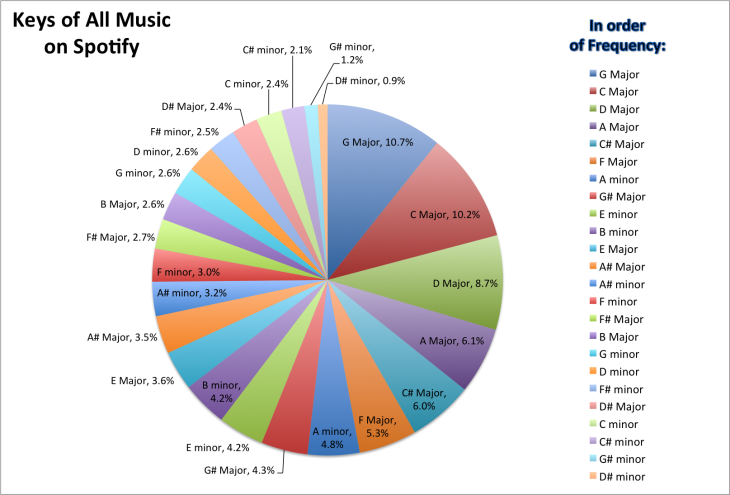Pretty fascinating stuff! Now, this is just from Spotify but as a a mirror to popular music culture, it’s pretty telling. Something to consider next time you’re looking to create music. Perhaps starting in one of the lesser-used keys might yield an unexpected song or chord progression/pattern. If you find yourself writing in the same keys too much, try working in keys you are less familiar with. Sometimes happy accidents happen while you’re learning how the formula lays out in that key. Remember, there is only one formula for a major/minor scale. It lays down intact in each of the 12 keys but with the uneven landscape of the piano keyboard, it zig-zags a little differently in each key. Focus on the single formula by number and adapt to the shape and chords in each key. The context of formula coupled with the familiarity of the chords of the formula in each key (and their inversions) makes you more adept at playing any song in any key. Transposing a song from key to key leaves each key’s chords for a different set of chords but the structure of the song transposes intact. That is why a song sounds like itself when transposed. So here’s the question I ask every musician I know:
When a song transposes, what transposes?
That is what I teach and it’s the key to understanding the language of music. Interested to learn more? Check out The Key of One book/DVD and info on private lessons with author Robbie Gennet at www.thekeyofone.com

